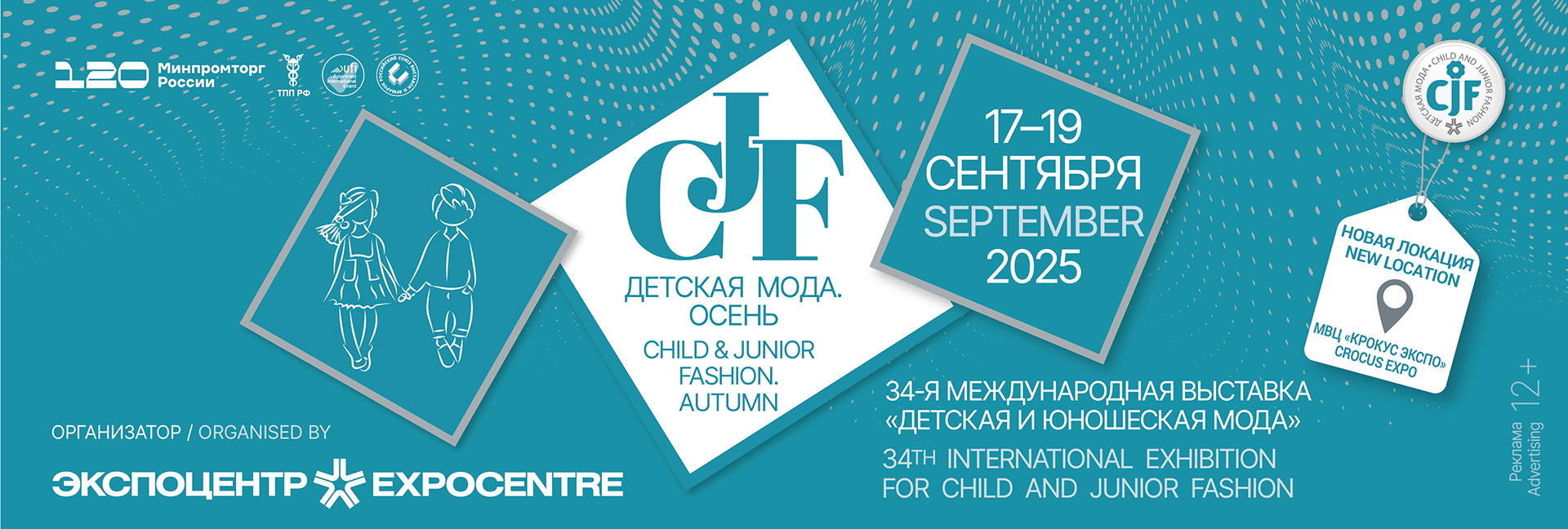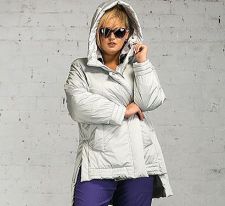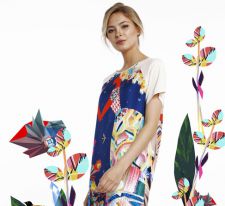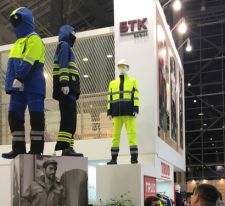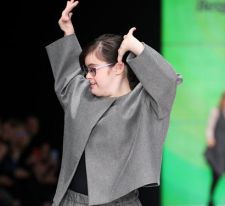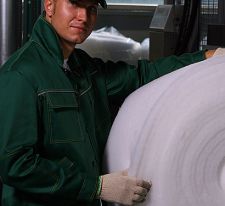Problems of choosing and using synthetic insulation materials in clothing
part 1 part 2
On the other hand, synthetic insulation materials created from primary polyester fiber (almost perfectly white, durable, form-resistant, pleasant to the touch), as a rule, hollow structures, are much more effective. The connection of fibers (fiber) in such materials occurs thermally: twisted elastic fibers are fused in certain areas at high temperatures (up to 200 °C). Accordingly, such heaters subsequently withstand even boiling (if necessary, disinfection, indelicate cleaning, etc.). Today, with the use of such heaters, clothing for extremely low temperatures is produced in our country, and it is they who have successfully pushed expensive foreign brands on the market.

Of course, not all synthetic insulation materials are the same even when using identical raw materials. The difference in technologies, production approaches, the level of competence of personnel, quality control and many other indicators - all this makes the insulation different in properties, qualities and operational characteristics. For example, thousands of dishes can be made from grain according to various recipes, but this is not a reason to declare the identity of the properties of each of them only on the basis of the use of a common raw material basis, or to combine all cars based on the fact that all wheels, body, engine, etc. are ridiculous, but such analogies in the market of synthetic insulation are not it is rare, and specialists in the selection of materials must be attentive and competent.
Let's repeat, because this is really important: the same insulation when used in combination with different fabrics of the top and lining will work differently.
The same total density of insulation or insulation materials, for example, 300 g/m2 with one layer of canvas or three layers of 100 g/m2, will give different indicators of thermal protection in the final product (the number of layers will increase thermal protection, especially if they are calendered).
The advantage of synthetic insulation is their calendering. This is an additional thermomechanical treatment of the canvas, converting it into two or more dense layers. For the first time in the Russian Federation, calendered canvases "Holofiber-Soft" were introduced in 2006 at the Moscow plant of nonwovens "Thermopol" and still remain a unique product in the line of this manufacturer.
To choose a heater when designing clothes, it is necessary to take into account that calendered and non-calendered heaters work differently, creating different layers in the clothing package. Calendering provides:
•increase in total thermal resistance;
*increase in strength characteristics;
no fiber migration;
*additional resistance to multiple compression;
*uniform recoverability over the entire surface of the canvas;
*uniform distribution of insulation in the finished product and longer preservation of the declared properties and qualities.
Calendering of insulation gives a number of advantages in the manufacture of insulated clothing: firstly, there is no need for additional stitching, and secondly, it is convenient to perform cutting and sewing, and clothes recover faster after packaging with the use of vacuumization.

To obtain the most objective and professional information, it is recommended to contact manufacturers, and not sellers or resellers of synthetic insulation. Often, experts are misled by names indicating certain northern countries or famous mountains, to which sintepons produced somewhere in the Moscow region have absolutely nothing to do. In this case, you need to request at least one official (not advertising!) confirmation of the technology by which this or that insulation is produced.
Another recommendation is to study the available results of tests, research and experiments (Central Research Institute of the Garment Industry, Research Institute of Occupational Medicine, Gazprom Safety and other accredited centers) and choose insulation based on these data, and not advertising publications of merchants. It is advisable to conduct your own additional research before the serial introduction of the collection and mass tailoring, taking into account design features.
Modern technologies for the production of synthetic insulation do not involve the inclusion of additives from natural and artificial fibers to improve properties and qualities. Moreover, non-woven synthetics surpassed natural, artificial and composite materials (that is, with additives) in terms of performance and practicality. Fiber additives like merino wool, camel wool, sheepskin are nothing more than an advertising move designed for a low level of qualification of a specialist who is sure that it is better because it is better. But this is not so: additives reduce the performance of high-quality synthetics, which was created as an alternative to natural materials with their inherent disadvantages. And the inclusion of the above additives may even reduce the originally declared comprehensive insulation indicators due to the use of fundamentally different fibers in composition.
By the way, not many people know that synthetic insulation, positioned as natural synthetics or more natural synthetics (which in itself, you will agree, sounds strange) contains about 2% of the mass fraction of "wool waste" (fibers culled in the production of high-quality natural wool products), which,actually, it allows you to call synthetic insulation hardly "purely natural wool". It is obvious to any textile expert: in order for a natural additive to begin to somehow manifest itself at the level of properties and qualities in the insulation, its mass fraction should be at least 20-25% and higher, but not about 2%.
So, faced with the problem of choosing and using synthetic insulation in clothing, do the following:
•study technical, not advertising information;
make a request to the manufacturer of the insulation, and best of all, visit the production, study the conditions for the release, storage, dispatch of materials, consult with real technical specialists, and not virtual sellers, as a rule, who do not have a basic textile education. Believe me, no matter how much you want to throw dust in your eyes, all the problems will be immediately visible in real production;
•compare data on different types of insulation – even from the same manufacturer;
*analyze the application experience of other companies. Do not hesitate to contact competitors or market leaders;
•be sure to personally select the highest quality insulation materials;
•conduct tests and/or experimental use of the products to make sure that your choice is correct, and only after that give a guarantee of the properties, qualities and performance of the product as a whole;
focus on well-known and well-established brands of insulation.
Author: Natalia Golubkova, specialist in nonwovens and synthetic insulation
